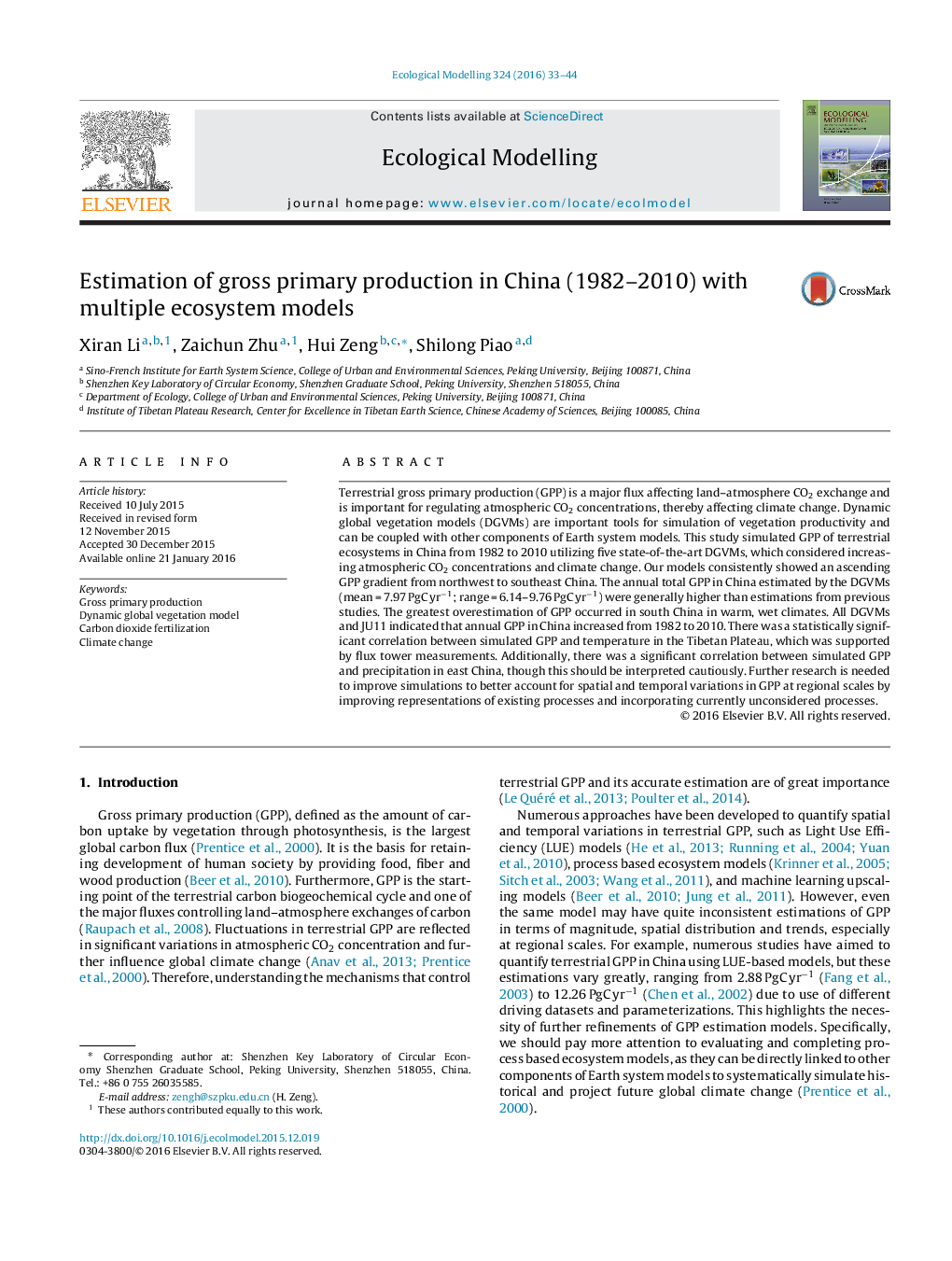| Article ID | Journal | Published Year | Pages | File Type |
|---|---|---|---|---|
| 6296372 | Ecological Modelling | 2016 | 12 Pages |
Abstract
Terrestrial gross primary production (GPP) is a major flux affecting land-atmosphere CO2 exchange and is important for regulating atmospheric CO2 concentrations, thereby affecting climate change. Dynamic global vegetation models (DGVMs) are important tools for simulation of vegetation productivity and can be coupled with other components of Earth system models. This study simulated GPP of terrestrial ecosystems in China from 1982 to 2010 utilizing five state-of-the-art DGVMs, which considered increasing atmospheric CO2 concentrations and climate change. Our models consistently showed an ascending GPP gradient from northwest to southeast China. The annual total GPP in China estimated by the DGVMs (mean = 7.97 PgC yrâ1; range = 6.14-9.76 PgC yrâ1) were generally higher than estimations from previous studies. The greatest overestimation of GPP occurred in south China in warm, wet climates. All DGVMs and JU11 indicated that annual GPP in China increased from 1982 to 2010. There was a statistically significant correlation between simulated GPP and temperature in the Tibetan Plateau, which was supported by flux tower measurements. Additionally, there was a significant correlation between simulated GPP and precipitation in east China, though this should be interpreted cautiously. Further research is needed to improve simulations to better account for spatial and temporal variations in GPP at regional scales by improving representations of existing processes and incorporating currently unconsidered processes.
Related Topics
Life Sciences
Agricultural and Biological Sciences
Ecology, Evolution, Behavior and Systematics
Authors
Xiran Li, Zaichun Zhu, Hui Zeng, Shilong Piao,
